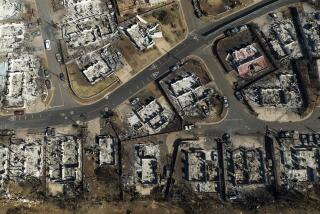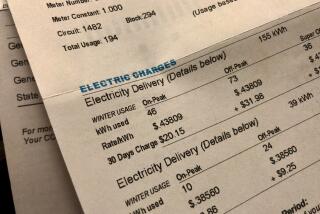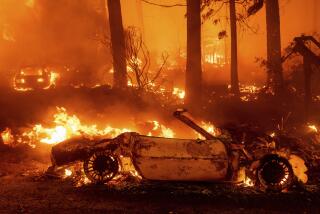PG&E admits its equipment likely sparked California’s most destructive wildfire
Nearly four months after California’s most devastating wildfire swept through Paradise and surrounding towns, Pacific Gas & Electric Co. has acknowledged that its equipment probably sparked the blaze that destroyed nearly 14,000 homes and killed 85 people, most of them elderly.
The official investigation into the cause of the Butte County blaze is continuing, but the utility said Thursday that “the company believes it is probable that its equipment will be determined to be an ignition point of the 2018 Camp fire.”
PG&E has already filed for bankruptcy protection due to losses from the Nov. 8 fire, which scorched more than 153,000 acres and has placed new pressure on utilities to improve the safety of their power distribution systems.
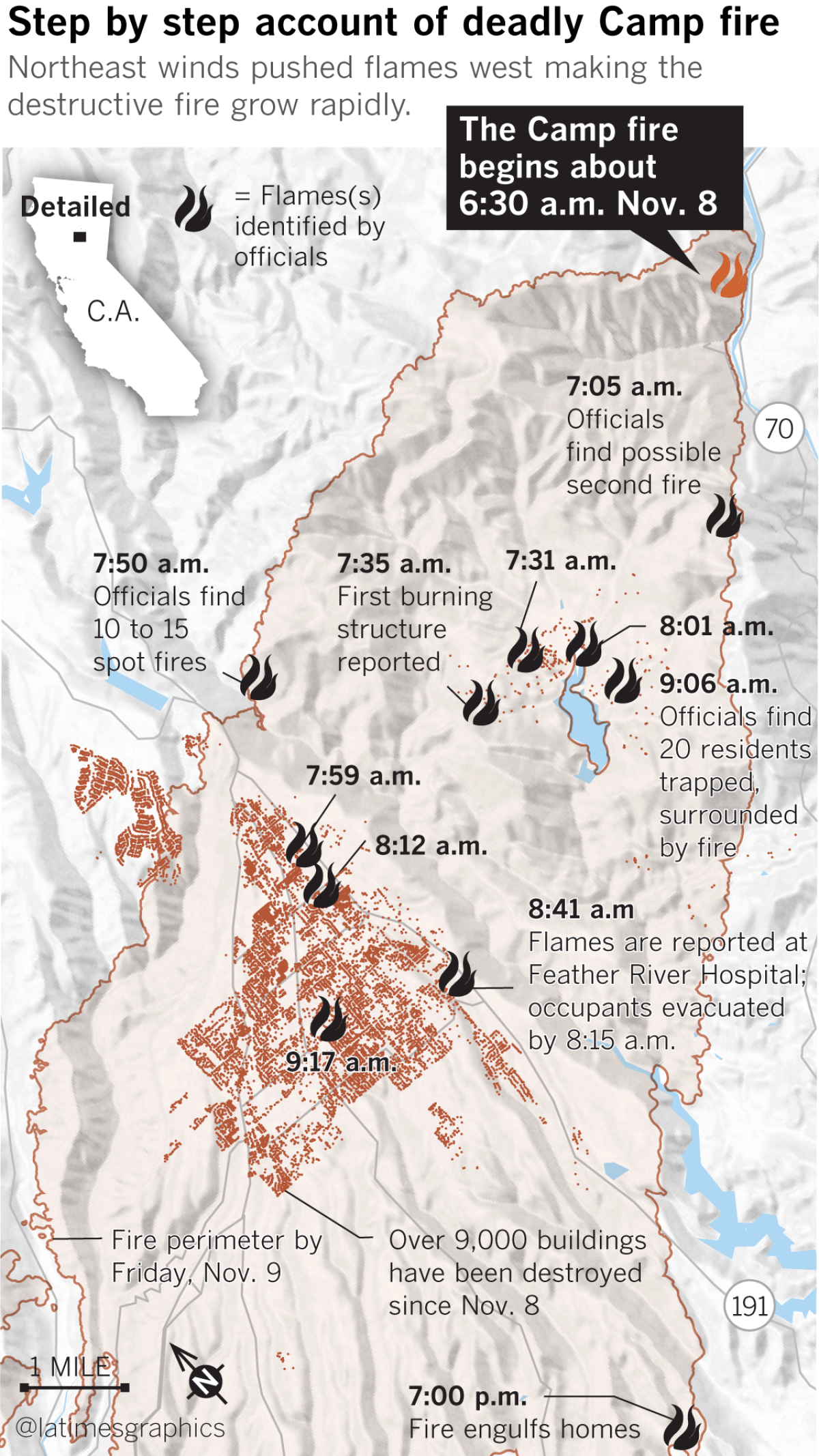
Scores of lawsuits have been filed against the state’s biggest utility on behalf of people whose loved ones were killed, whose pets disappeared into the blazing wilderness and who lost everything they owned. They accuse the utility of failing to properly maintain its equipment.
Response to PG&E’s statement was swift and resigned Thursday.
“I’m not surprised, but what can you do?” asked Terry Bates, whose home in Paradise — population about 26,600 on Nov. 7 — was destroyed.
Bates was a groundskeeper at Feather River Hospital, which was damaged and has not reopened. He currently works at one of Feather River’s clinics, which was spared. He was able to buy a house in Oroville, but his commute has grown from five minutes to 40.
“We’re going to rebuild, I think,” he said. “We’re not even cleaned up yet…. We haven’t found the cat.”
John Cronister, 59, is living in a travel trailer without water or electricity on his burned-out lot in Paradise. The retiree hopes the level of destruction in Butte County will move PG&E — which he said is way too big — to improve preventive maintenance of its equipment.
“Someone at the top is not doing their job, not paying attention,” Cronister said. “Those people should go to jail for what’s happened here.”
Attorney Joseph W. Cotchett, whose Burlingame firm represents more than 1,000 victims of Northern California wildfires with PG&E involvement, said Thursday, “It’s about time they’ve come to the table and admitted what everyone has known for a long time.”
The Camp fire, he said, is “one more example of profits over safety. Something has to be done to either break up PG&E and/or put a public utilities commission in place that is truly going to protect the public. So many people have innocently died because of the lack of safety precautions taken by this utility. It goes back years.”
In fact, most of the Camp fire lawsuits cite a grim catalog of death and destruction involving PG&E. Among the disasters are a 1991 gas explosion in Santa Rosa that killed two people; the Butte fire in 2015, which killed two; and the 2010 San Bruno gas line explosion, which killed eight and saw the company found guilty of six felonies and fined more than $1.6 billion.
Most of the suits also cite the so-called wine country, or North Bay, wildfires — a series of fires in 2017 that caused 44 deaths and displaced nearly 100,000 people.
“While the fires had numerous origin points, they all shared a common alleged cause — unsafe electrical infrastructure owned, operated and maintained by PG&E,” according to a suit filed on behalf of the town of Paradise.
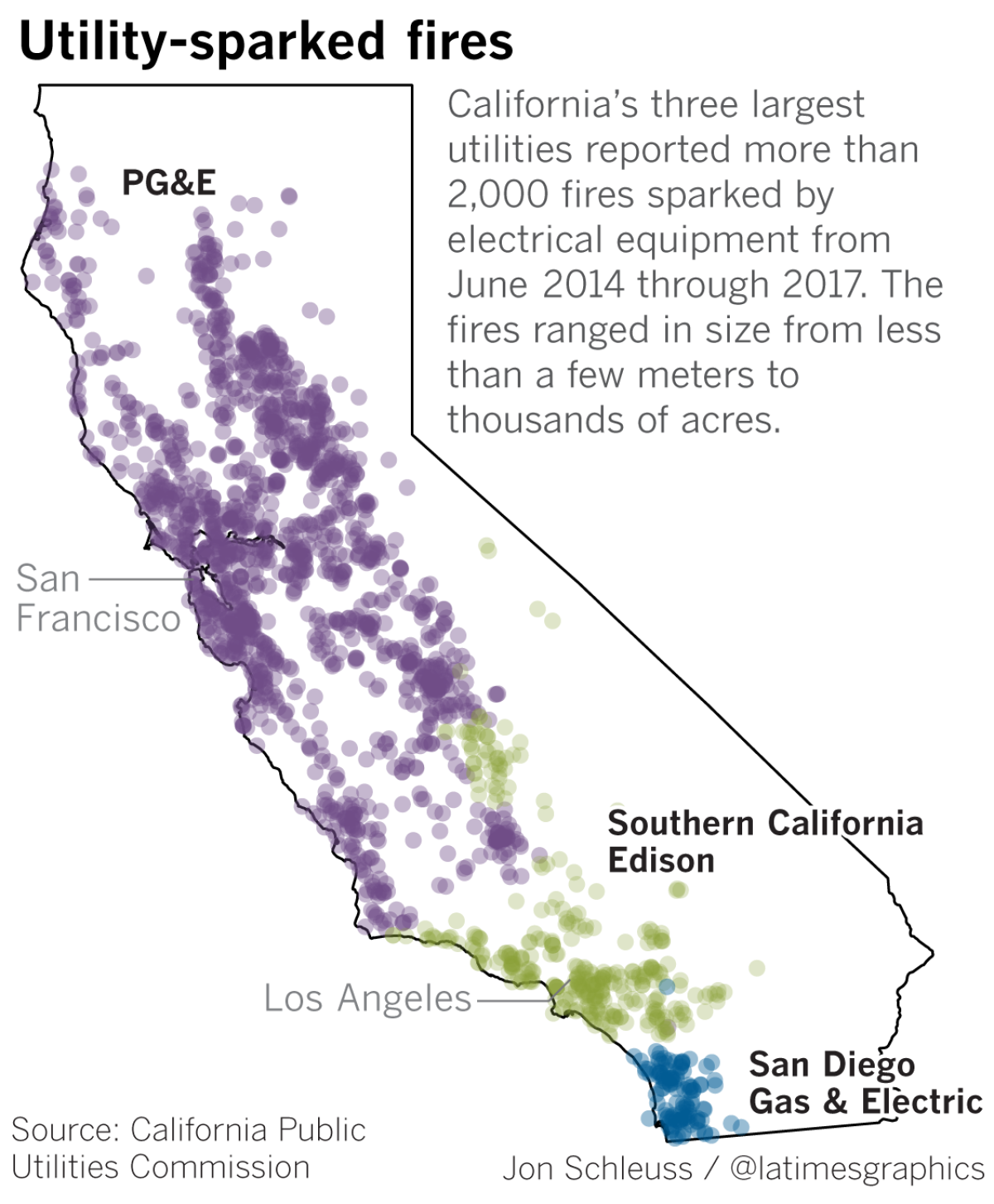
Paradise Mayor Jody Jones said she saw her community’s anger at the utility manifest itself when locals threw rocks at the workers in town to make repairs.
“I want to make a distinction between those workers who gave up their beds and family life to try and put our town back together, and the corporate structure with the maintenance of our lines,” Jones said. “Sometimes people can’t see the difference between the two. But if to provide benefits to shareholders, they were deferring maintenance, they have to be held accountable for that.”
Another suit, filed in December, said a damaged metal hook or ring on a transmission tower was at least partly to blame for the fire. When it failed, the suit said, it allowed an uninsulated cable to touch the steel tower.
“Blazing hot molten materials dropped into the fine dead fuels below … igniting the devastating Camp Fire,” the suit claims. “Strong winds, low humidity, and dry vegetation fueled the fire. The intensity of the heat generated by the fire and the terrifying speed at which it spread are unimaginable.”
PG&E said a Chapter 11 bankruptcy filing, which allows the company to continue operating while it comes up with a plan to pay its debts, was the only way to deal with billions of dollars in potential liabilities from the series of deadly wildfires.
Paradise Councilman Steven Crowder said he was concerned about what this means for ratepayers.
“I do have a problem with the [Public Utilities Commission] if they allow them to increase rates to pay for their mistakes, although I fully expect that is what is going to happen — that is what has happened in the past,” he said.
PG&E has blamed its wildfire costs in part on climate change, which scientists say is contributing to bigger and hotter fires in California and across the Western United States. The company has also pushed lawmakers to rewrite the state’s strict liability laws, which allow utilities to be held liable for wildfires started by their equipment even if they follow all safety rules and aren’t found to be negligent.
The utility has estimated its potential wildfire liabilities at $30 billion or more, but that figure includes losses from the Tubbs fire, the biggest of the 2017 wine country fires. The California Department of Forestry and Fire Protection announced last month that the Tubbs fire was not caused by PG&E, as initially believed, which by some estimates could cut the company’s potential liabilities in half.
In Thursday’s statement, officials said the company was facing “extraordinary challenges” relating to the 2017 and 2018 fires. “Management has concluded that these circumstances raise substantial doubt about PG&E Corporation’s and the Utility’s ability to continue as going concerns,” the statement said.
Rep. Doug LaMalfa (R-Richvale) said PG&E’s announcement that it was recording a $10.5-billion charge for legal claims was a sign the company was trying to move forward responsibly.
The company needs to be held accountable for any missteps it made in maintaining its equipment, he said, but he also blames state and federal forest management policies. “Government does play a role and shoulders some of the responsibility for a lot of the wildfires around here,” he said.
Mark Toney, executive director of the Utility Reform Network, does not share that view. His watchdog organization wants the federal court to appoint a receiver to run the company. He said senior management and the PG&E board should be stocked with engineers, not lawyers and people in finance.
“PG&E is a repeat felon,” Toney said. “They are unable to operate safely and comply with the law.”
More to Read
Sign up for Essential California
The most important California stories and recommendations in your inbox every morning.
You may occasionally receive promotional content from the Los Angeles Times.
